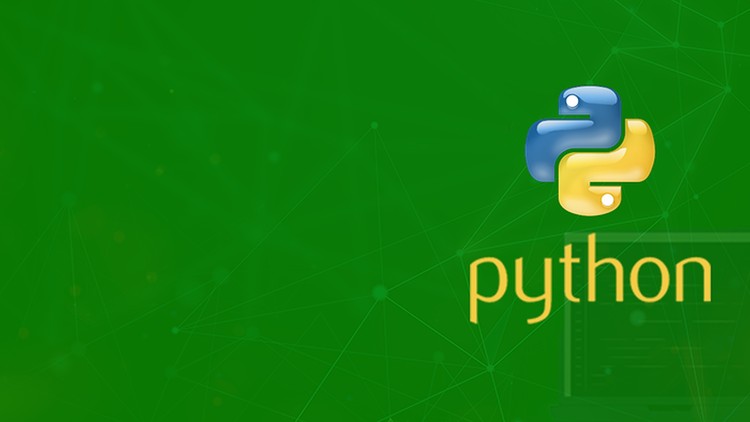Python for Data Science
- Description
- Curriculum
- FAQ
- Reviews
This Python for Data Science course is an introduction to Python and how to apply it in data science. The course contains ~60 lectures and 7.5 hours of content taught by Praba Santanakrishnan, a highly experienced data scientist from Microsoft.
Staring with some fundamentals about “what is data science,” and “who is a data scientist,” the program rapidly move into the specific challenges of data science. This includes the challenges of problem definitions and collecting data, to data pipelines, data preparation, data cleaning and related subjects. Data science methodologies, data analytics tools and open source tools are all covered. Model building validation, visualization and various data science applications are also covered. Discussion of the types of machine learning are covered, including supervised and unsupervised machine learning, as well as methodologies and clustering. NumPy, Pandas, Python Notebook, Git, REPL, IDS and Jupyter Notebook are also covered. Arrays, advanced arrays, and matrices are discussed in some detail to ensure you understand what it is all about and how these tools are implemented.
-
1Segment - 02-introduction-to-data-science-finVideo lesson
-
2Segment - 03Video lesson
-
3Segment - 04-doing-data-scienceVideo lesson
-
4Segment - 05-problem-definitions-and-collecting-dataVideo lesson
-
5Segment - 06-data-pipelines-preparation-cleaning-understandingVideo lesson
-
6Segment - 07-model-building-validation-visualization-data-science-applicationsVideo lesson
-
7Segment - 08-data-science-methodology-data-analytics-tools-open-source-toolsVideo lesson
-
8Segment - 09-data-science-future-readingsVideo lesson
-
9Segment - 10-ai-primer-and-machine-learning-conceptsVideo lesson
-
10Segment - 11-machine-learning-applicationsVideo lesson
-
11Segment - 12-machine-learning-supervised-unsupervisedVideo lesson
-
12Segment - 12-types-of-machine-learning NUMBERING ISSUE, FIXVideo lesson
-
13Segment - 13-supervised-unsupervised-learning-methodology-clusteringVideo lesson
-
14Segment - 14-python-vs-rVideo lesson
-
15Segment - 15-tools-for-scalable-machine-learningVideo lesson
-
16Segment - 16-introduction-to-pythonVideo lesson
-
17Segment - 17-more-python-detailsVideo lesson
-
18Segment - 18-python-examplesVideo lesson
-
19Segment - 19-anaconda-navigatorVideo lesson
-
20Segment - 20-introduction-to-python-notebookVideo lesson
-
21Segment - 21-git-and-replVideo lesson
-
22Segment - 22-introduction-ids-and-juypter-notebookVideo lesson
-
23Segment - 23-lab-tutorials-learning-juypter-notebookVideo lesson
-
24Segment - 24-python-loops-and-functionsVideo lesson
-
25Segment - 25-python-objects-introductionVideo lesson
-
26Segment - 26-python-numpyVideo lesson
-
27Segment - 27-arraysVideo lesson
-
28Segment - 28-advanced-arraysVideo lesson
-
29Segment - 29-matricesVideo lesson
-
30Segment - 30-numpy-lab-tutorialVideo lesson
-
31Segment 31 -review-session-python-for-data-scienceVideo lesson
-
32Segment 32 - Why PandasVideo lesson
-
33Segment 33 - Data SeriesVideo lesson
-
34Segment 34 - Series, Keys and IndicesVideo lesson
-
35Segment 35 - NumPy Array vs. Panda SeriesVideo lesson
-
36Segment 36 - DataframeVideo lesson
-
37Segment 37 - Dataframe OperationsVideo lesson
-
38Segment 38 - Using LambdaVideo lesson
-
39Segment 39 - Dataframe Operations (Continued)Video lesson
-
40Segment 40 - Statistical Analysis, Calculations and OperationsVideo lesson
-
41Segment 41 - Lab - Advanced Operations in ActionVideo lesson
-
42Segment 42 - Lab - Advanced Operations in Action (Continued)Video lesson
-
43Segment 43 - Pandas Visualization and MatplotlibVideo lesson
-
44Segment 44 - SeabornVideo lesson
-
45Segment 45 - ggplotVideo lesson
-
46Segment 46 - Statistical GraphsVideo lesson
-
47Segment 47 - Lab - VisualizationsVideo lesson
-
48Segment 48 - Introduction to Scikit-LearnVideo lesson
-
49Segment 49 - Scikit-Learn Uses and ApplicationsVideo lesson
-
50Segment 50 - Scikit-Learn vs. Other ToolsVideo lesson
-
51Segment 51 - Scikit-Learn Classes, Utils and Data SetsVideo lesson
-
52Segment 51 - Setting Up Scikit-LearnVideo lesson
-
53Segment 52 - Estimators and AlgorithmsVideo lesson
-
54Segment 53 - Preprocessing and Feature EngineeringVideo lesson
-
55Segment 54 - MetricsVideo lesson
-
56Segment 55 - ClusteringVideo lesson
-
57Segment 56 - PredictionVideo lesson
-
58Segment 57 - Principal Component AnalysisVideo lesson
-
59Segment 58 - Lab - Classification AlgorithmVideo lesson

External Links May Contain Affiliate Links read more





